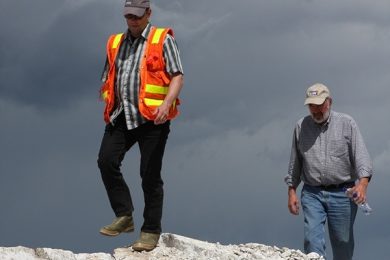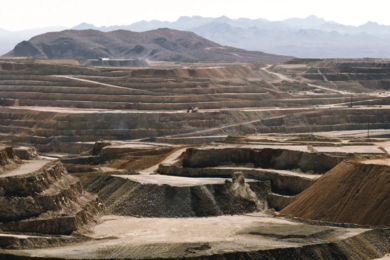Nemaska Lithium Inc has released the results of its 2018 feasibility study on the Whabouchi mine and concentrator located in the Eeyou Istchee James Bay territory in Québec, and on the Hydromet Plant located in Shawinigan, Québec.
“With more than a year of experience in building, commissioning and operating the Hydromet Phase 1 Plant in Shawinigan and the production of over 1,050 t of above 6% spodumene concentrate from a bulk sample at the Whabouchi mine, our confidence in the process at both the mine and Hydromet Plant has increased and we believe our project is significantly de-risked. As well, the updated resource block model following the 2016 and 2017 drilling campaign has allowed us to increase the Whabouchi mine life from 26 to 33 years,” said Guy Bourassa, President and CEO of Nemaska Lithium. “The 2018 Feasibility Study takes into consideration our operational experience and our current off-take contracts as well as on-going discussions with potential customers and our assessment of the lithium market. Accordingly, we have increased the overall capacity of the commercial project by 20% and added flexibility to the Hydromet Plant, increased the lithium carbonate production capacity up to 16,000 t/y while maintaining the flexibility to produce up to 100% of lithium hydroxide, as both products are in high demand and the known lithium carbonate sales price is now very similar to that of lithium hydroxide.”
The 2018 feasibility study shows a pre-tax NPV (8% discount) base case of C$3.3 billion and a pre-tax IRR of 34.4%. There has been a considerable strengthening of the lithium salts market which has been reflected in the selling prices for lithium hydroxide and lithium carbonate. The 2018 study uses an average sales price of $14,000/t for lithium hydroxide throughout the life of mine, while the average selling price for lithium carbonate is $9,500/t for the first five years and $12,000/t thereafter over the remaining life of mine.
On the OPEX side, with costs per tonne during the ≈24 years open-pit mine life of $2,811/t for lithium hydroxide and of $3,403/t for lithium carbonate, Nemaska Lithium remains a low-cost producer of both products and confirms its competitive position among global lithium salts producers.
The current CAPEX for the Mine, Concentrator and Hydromet Plant is C$801 million, excluding already invested CAPEX of C$74 million. This CAPEX reflects the process optimization as well as the additional equipment required to increase production of lithium carbonate from 3,250 t/y up to 16,000 t/y, which is reflected in the increase in the total output capacity of the Hydromet Plant by 20%, going from a capacity of 27,400 t/y LCE to 33,000 t/y LCE. In addition, based on the operating experience gained at both the mine and the Hydromet Plant, the 2018 study includes, among other things, the addition of an ore sorting circuit at the mine. Additional equipment and buffer zones have also been added throughout the process at both sites to increase the operability, while enhancing process reliability as well as allowing on-going maintenance without disrupting operations, thus ensuring optimal performance.
Bourassa continued, “We have been actively engaged on project financing for several months and are now at the stage of confirmatory due diligence with numerous groups interested in participating in the financing of the project. Given the alternatives being evaluated, we are confident that the project financing will be completed during the current quarter.
“I am confident that, given the current stage of the project, the strong economics of this 2018 feasibility study will positively impact the ongoing financing discussions and help the corporation in completing the required project financing structure for the benefit of all stakeholders of the corporation,” said Steve Nadeau, Chief Financial Officer of Nemaska Lithium.
The 2018 Feasibility Study encompasses a combined open pit and underground mine operation, concentration facilities, tailings and water management at mine site as well as a hydrometallurgical processing facility in Shawinigan. It was prepared by Met-Chem/DRA and Hatch Ltd. with contribution from SGS Geostat for resource evaluation, SNC-Lavalin for waste-tailings codisposal and water management, Nardella for the project schedule and from Michel L. Bilodeau for the economic model. The Mineral Reserve in this 2018 feasibility study has an effective date of November 7, 2017.










